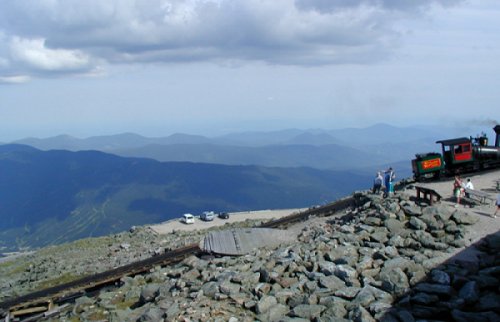Human Energy
Today, human energy. The University of Houston's College of Engineering presents this series about the machines that make our civilization run, and the people whose ingenuity created them.
The walk to the top of New Hampshire's Mount Washington, the highest point in the northeastern United States, is about four miles. But you also increase your elevation by over half a mile. Suppose that you, your clothing, and your pack all weigh 180 pounds. You'll have done about 500,000 foot-pounds of work lifting yourself up the mountain. You'll almost certainly be quite tired.
You burn up part of your own body doing that, but less than you might hope. If our bodies were perfectly efficient, that climb would cost only around 170 calories. Actually, our bodies are only twenty-five percent efficient, so it'd take more like seven hundred calories. Even then, one hearty meal would put us back where we started. Well, at least the view from the top is gorgeous.
Still the payoff in exercise is greater than just the effort of lifting ourselves to the top. We dissipate around three hundred calories per hour in straight walking, depending on our weight -- lifting and dropping our legs, swinging our arms, breathing.
So we have to distinguish effort that simply dissipates energy from effort that places energy where we might use it. To make use of it, imagine a fairly fanciful rig: Suppose, once at the top, we fit a skateboard with wheels so we can ride back down the mountain on the cog railway tracks. Suppose we wrap a long cord around a drum at the top. As we ride down, the drum spins and powers a generator. If we travel at eighteen miles an hour, we can keep seven bright light bulbs lit until we reach the bottom ten minutes later. Then our efforts will've been put to brief use.
Any energy conversion introduces inefficiency, and human bodies are puny engines. In the nineteenth century, the British introduced the treadmill to punish prisoners. For hours they climbed stair steps on a rotating drum that drove a mill -- climbing four times the height of Mount Washington each day. Treadmills didn't catch on in the United States. Humans couldn't replace water wheels, and we wanted labor for more specific jobs. Why squander an effort that could be used to build roads or pick cotton?
A nineteenth-century table of the rates of doing useful work shows that a man working a pump all day, or pushing a capstan, produces only a twentieth of a horsepower. That same man climbing Mount Washington in two hours might exert an eighth of a horsepower in lifting himself up. If he takes it easy and does it in four hours, that drops to only a sixteenth of a horsepower, and so on.
By 1910 we find new kinds of tables. Instead of talking about human output, they show how much machine-made power various industries consume per employee. Humans are now managers of power.
The printing industry used a third of a horsepower per employee, while the steel industry used five. And those numbers continue to rise. You and I would do better with the problems of energy consumption if we had a clearer sense of how it all relates to our own body -- to the one engine we all know in common.
I'm John Lienhard, at the University of Houston, where we're interested in the way inventive minds work.
(Theme music)
For more on energy in its various forms and power, see any elementary physics or thermodynamics textbook. See also the various links in the text.

A view from the top of Mount Washington